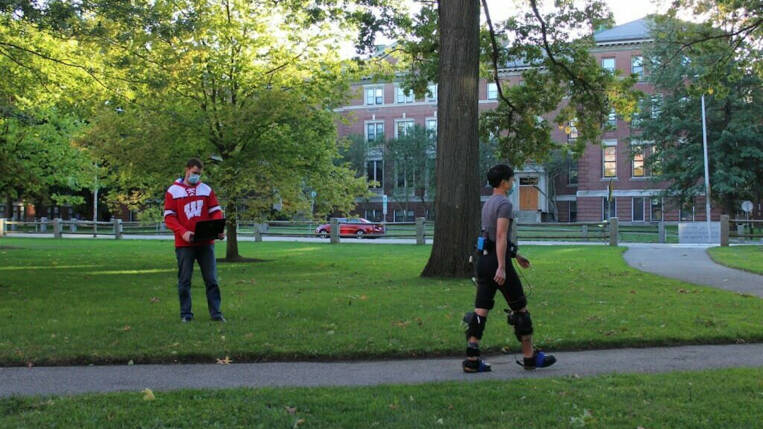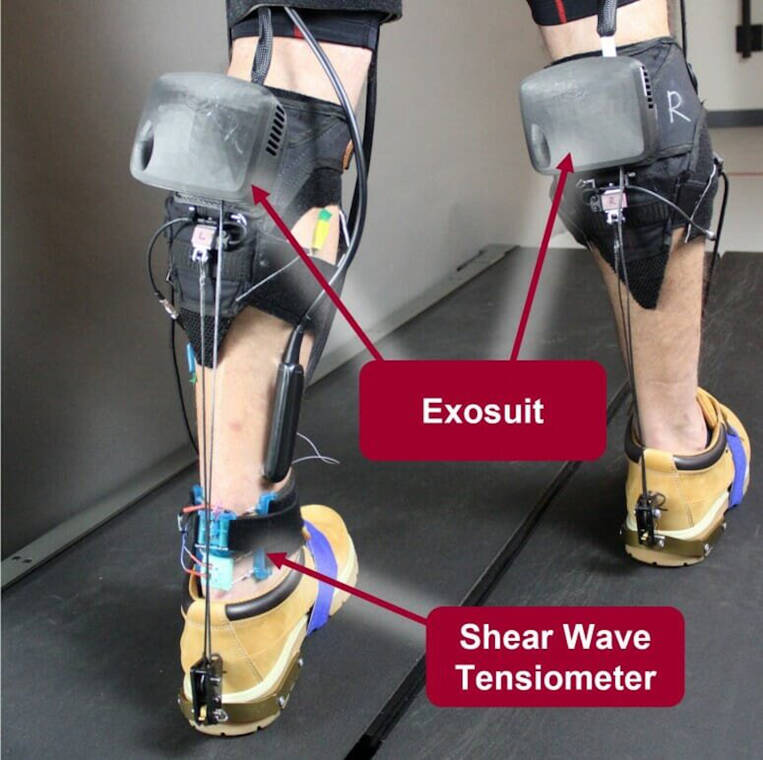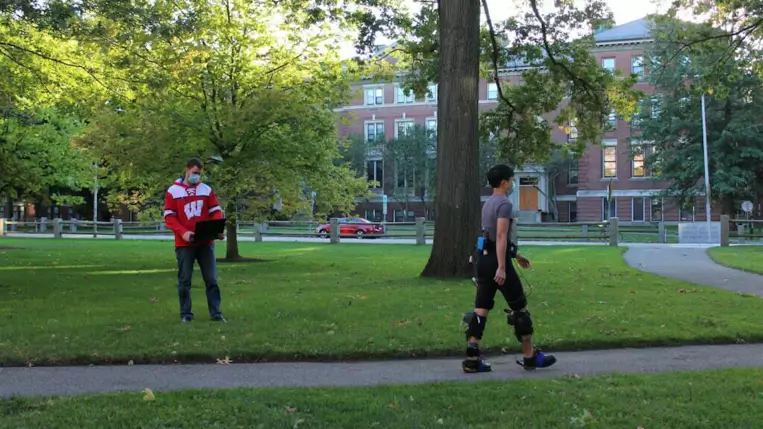The support of an exosuit has a different effect on each person. Researchers have now been able to prove this with the help of a shear wave tensiometer.

A team of researchers from the University of Wisconsin-Madison (UW) and Harvard University have used a shear wave tensiometer to track the extent to which an exosuit provides measurable relief to a user and the extent to which they benefit from mechanical support. The sensor is wearable and provides real-time data. With its help, they found that it is not possible to develop a single control for an exosuit that works for everyone.
For an exosuit to work, it usually has to be adjusted to the user's individual body movements and their activities in the real world beyond the lab. For example, if support is to be provided during walking, then the support must be provided at the right time to relieve the calf muscles and Achilles tendon. But how large and targeted the effect is is not as easy to track, the science team describes the research problem in the study, "Modulation of Achilles tendon force with load carriage and exosuit assistance," published in Science Robotics. For this, the changes in the load on muscle and tendon tissue must be measured directly during exosuit use.
Load measurements with shear wave tensiometer
To achieve this, the researchers resorted to a shear wave tensiometer, a wearable sensor developed at the UW back in 2018. The sensor is applied to the wearer's skin over a tendon, so it does not need to be implanted. With the help of the tensiometer, tendon strength can be determined by changes in the vibrational properties of the tendon, which vary when loaded by movement.

The research team tested the sensor on eight subjects. The study participants were healthy young adults. They first had to run on a treadmill without an exosuit. For loading, they carried different weights in a backpack. In addition to measuring several biomechanical parameters, the researchers used the tensiometer in the experiment to measure the load on the Achilles tendon. As the researchers had assumed, the load on the tendon increased in all participants with increasing weight in the backpack.
They then strapped the subjects into a supportive exosuit made of soft textile and actuator for ankle support and repeated the tests. The scientific team now found that the results varied greatly: some of the participants had a force effect on the Achilles tendons as if they were not wearing a backpack, while in others the load changed only slightly.
Customization
Dylan Schmitz, a doctoral student and co-author of the study, attributes this to the individual physical differences between people. Each person responds differently to externally supplied walking assistance, he said. "So we can't assume that there is a one-size-fits-all control for an exosuit that works for everyone," he says. For an exosuit to produce the desired biomechanical changes, precise customization is needed depending on the user and the environment in which the support is to be provided. The tensiometer can then be used as a tool to make the appropriate measurements. This, he said, allows for customization of the exosuit's controls "so that they work effectively for individual users in different environments."
Source: Measured: Exosuits don't work equally well for everyone | heise online (07.12.2022)
